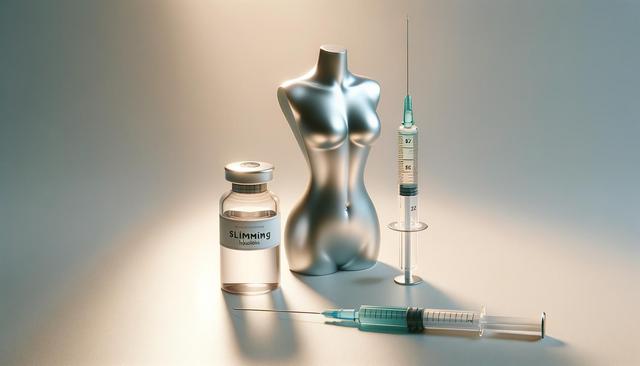
Understanding Slimming Injections: How They Work and What to Expect
What Are Slimming Injections?
Slimming injections refer to medical treatments that aim to support weight loss efforts by influencing metabolism, appetite, or fat absorption. These injections are typically administered under medical supervision and can include a range of active ingredients depending on the formulation. While not a standalone solution for weight loss, they may complement a healthy lifestyle when used appropriately. Some of the common types of slimming injections include lipotropic injections, which contain a mix of vitamins and amino acids, and other formulations that mimic hormones regulating appetite. These injections are not intended to replace diet and exercise but may serve as an additional tool in a broader weight management plan.
It’s important to note that slimming injections are not suitable for everyone. They’re generally recommended for individuals who have not achieved desired results through traditional methods alone or who meet specific health criteria. A thorough medical evaluation is typically required before starting treatment, ensuring the injections align with the individual’s health needs and goals.
How Do Slimming Injections Work?
The mechanism of action for slimming injections varies based on the type of injection being used. In general, they work by:
- Enhancing metabolism to increase the rate at which the body burns fat
- Suppressing appetite to help reduce caloric intake
- Improving energy levels to support increased physical activity
- Assisting in the breakdown and elimination of fat
For example, lipotropic injections often include ingredients like vitamin B12, methionine, inositol, and choline, which are believed to support liver function and help metabolize fat more efficiently. Other types may interact with hormones that regulate hunger and fullness, helping individuals manage their appetite more effectively.
Although results vary, some people experience changes in their weight or energy levels within a few weeks of starting a treatment plan. However, these outcomes are typically more pronounced when combined with consistent lifestyle changes, such as a balanced diet and regular physical activity.
Benefits and Considerations
When used under the guidance of a healthcare provider, slimming injections may offer several potential benefits for individuals struggling with weight management. These may include:
- Support for consistent energy levels throughout the day
- Help with appetite regulation and reduced food cravings
- Encouragement to maintain healthy habits due to visible progress
However, it’s important to consider the potential side effects and limitations. Some people may experience mild reactions at the injection site, such as redness or swelling. Others might report digestive discomfort or temporary changes in mood or energy. These effects are typically short-lived, but should be discussed with a healthcare provider.
Another factor to consider is the cost and frequency of treatment. Slimming injections are often administered weekly or biweekly, which may require ongoing financial and time investments. Additionally, they are not a guaranteed solution and should be viewed as part of a comprehensive health strategy rather than a quick fix.
Who Might Benefit Most from Slimming Injections?
Slimming injections may be appropriate for individuals who meet specific criteria, such as:
- Having a body mass index (BMI) in a certain range
- Facing challenges with appetite control or low energy
- Struggling with weight loss despite consistent efforts
- Needing additional support due to a medical condition related to metabolism
Before beginning treatment, a healthcare provider will usually conduct a physical examination, review medical history, and possibly order lab tests. This helps ensure the injections are safe and likely to be effective. Individuals with certain health conditions, such as thyroid disorders or liver issues, may require additional oversight or may not be suitable candidates for this type of intervention.
It’s also worth noting that motivation and commitment to lifestyle change play a significant role in the overall success of slimming injections. The injections can provide metabolic support, but sustainable weight loss typically comes from long-term behavior changes, such as healthier eating and regular exercise.
What to Expect During and After Treatment
The treatment process for slimming injections typically begins with a consultation and a personalized plan. During the consultation, the healthcare provider will explain the ingredients used, the expected timeline, and any necessary lifestyle adjustments. Once treatment begins, individuals may receive injections on a weekly basis, often accompanied by routine check-ins to monitor progress and address any concerns.
Throughout the course of treatment, individuals are encouraged to track their food intake, physical activity, and any changes in how they feel. This not only supports accountability but also helps healthcare providers tailor the approach as needed. Some may also recommend complementary strategies, such as nutritional counseling or fitness coaching, to enhance results.
After completing a prescribed course of injections, individuals may either continue with maintenance doses or transition to other forms of support, depending on their progress and long-term goals. Consistency in healthy habits remains crucial for maintaining weight loss and overall wellness after treatment ends.
Conclusion: A Supportive Option for Weight Management
Slimming injections can serve as a supportive option for individuals seeking additional tools in their weight management journey. While they are not a universal solution, they may offer meaningful benefits when used responsibly and in combination with a healthy lifestyle. Those considering this option should consult with a qualified healthcare provider to determine if slimming injections are appropriate for their needs. With realistic expectations and a commitment to overall well-being, these treatments may contribute to a more structured and effective weight management plan.